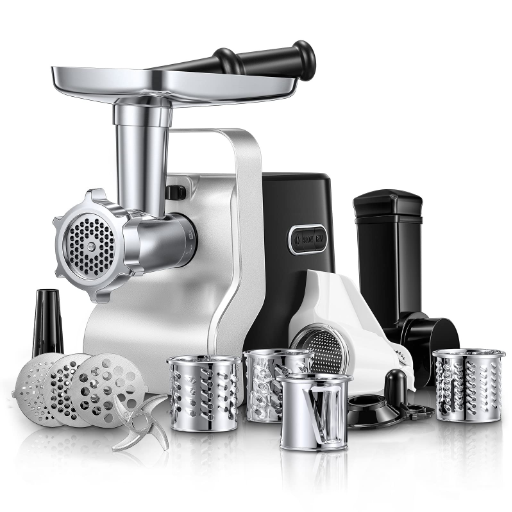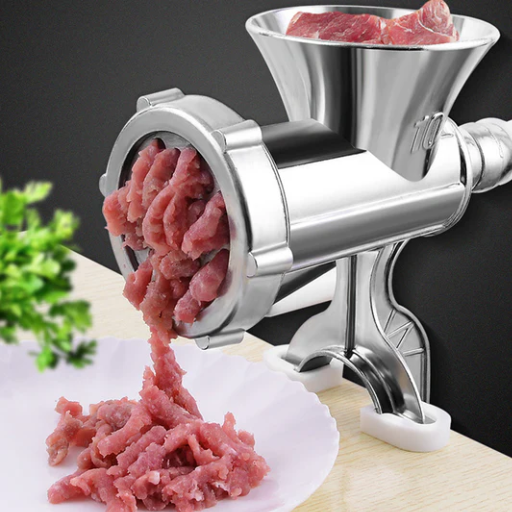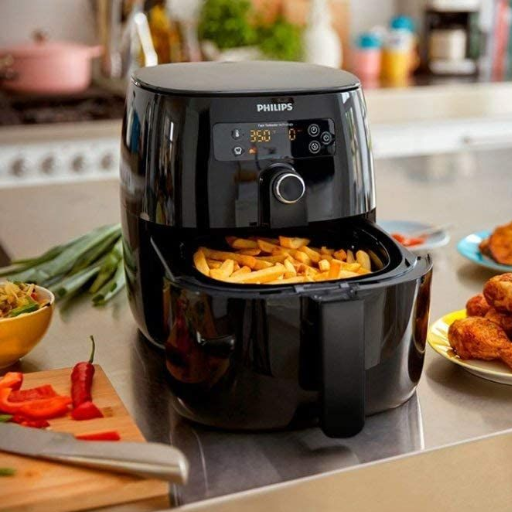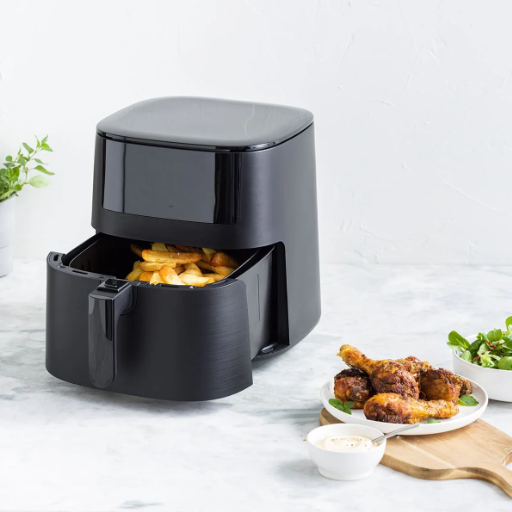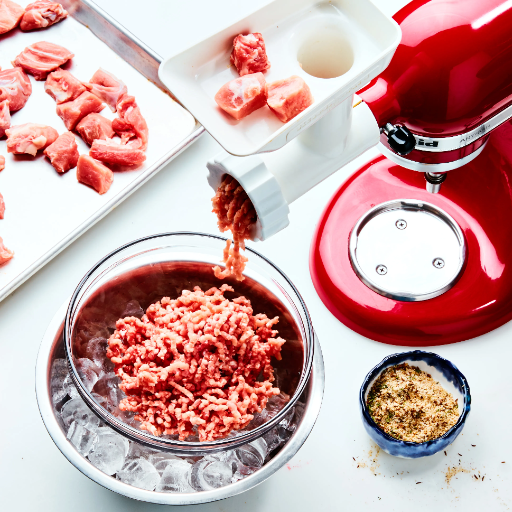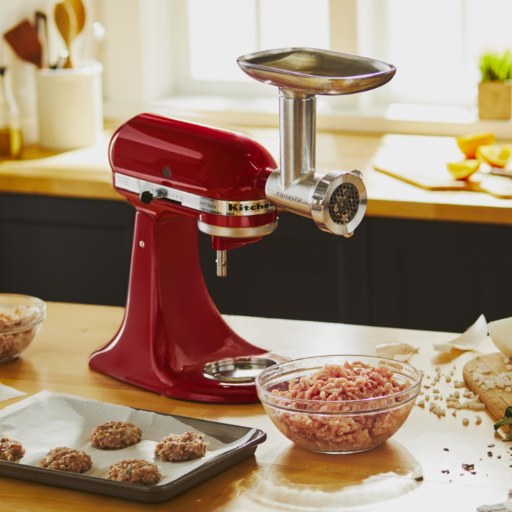In cooking, stand mixers are game changers especially when it comes to skill mastery. Stand mixers combine the characteristics of a kitchen device and a multi-functional kitchen tool. It makes the preparation process smooth, both offering a myriad of recipes to try out and new ones to explore, making them perfect for experienced bakers and aspiring amateur chefs. No doubt, the right stand mixers will elevate the experience of cooking.
To make the right buying decisions and understand your needs, this article will guide you through everything you should consider a stand mixer. Be it power, attachments, and speed settings; each feature is important in their own regard. Different models cater to different culinary interests, and this article will ensure that you are not left in the dark. By the end, you will know which device will balance your needs and aspirations in the kitchen. Stand mixers to discuss, as well as tips and tricks that will make cooking even more satisfying are still to come.
What is a Stand Mixer and How Does it Work?

A stand mixer is a highly adaptable kitchen tool that can make mixing, kneading, and whipping, much easier and less time consuming than doing them with bare hands. The machine has different parts: a motorized base, a mixing bowl, and separate equipment including dough hooks, paddle beaters, and whisks. The stand mixer cake batter and even bread dough are created with the precise power and rhythm that only a stand mixer can provide.
Most modern stand mixers allow the mixing bowl to rotate, and the attachments to spin while making circular motion. Known as planetary mixing, this type of mixing simulates hand mixing, but does the work for the baker. Home cooks and professional bakers appreciate stand mixers for the uniform results they deliver.
Understanding the Mechanics of a Stand Mixer
Like most machines, stand mixers consist of several components working together as a whole. First off, It comprises an electric motor which is essentially the engine of the stand mixer. It drives the attachments of the stand mixer at variable speeds with different mixing requirements. For instance, cream can be whipped at a high speed while dough is kneaded at a slow pace. The attachments are moved by a planetary gear system in which the motor makes the attachments to spin on their axes while revolving around the bowl. An advantage of this system is that the attachments hit all the mixing places without creating any unmixed pockets.
Usually stainless steel or glass, the mixing bowl is shaped to fit securely and to lock in place so that it remains stable while in operation. Different attachments like flat beaters, wire whips and dough hooks increase the functionalities of the stand mixer and allow it to perform more culinary work. Modern standalone mixers come with extra features such as soft start to minimize splattering, overload protection for the motor, and tilt-head or bowl-lift for user convenience.
Key Components of a Cook Stand Mixer
- Powerful Motor
The motor is the main driving part of the stand mixer because it makes sure its work is complete and smooth. Today’s models have high wattage motors which can be between 250 to 600 watts, depending on the model and use purpose. This power enables the mixer to perform all sorts of activities including kneading heavy doughs and whipping delicate creams.
- Speed Control Settings
Most stand mixers are designed with 3 to 12 different speeds which can be used to control the task at hand. Dry ingredients and batters need to be blended at low speeds while whipping and aerating need to be done at high speeds. The stand mixers are low in speed near to the threshold which prevents over mixing or splashing.
- Mixing Attachments
The flat beater, wire whip, and dough hook are all included as standard attachments. Each one of them is optimized for a specific acheivement. The flat beater is good at creaming butter and blending cookie dough. It beats egg whites, meringues, and whipped cream, while the dough hook works best on bread and pizza doughs.
- Mixing Bowl
Mixing bowls can be made out of materials like stainless steel or glass, come in different sizes, and take different uses in cooking. Stainless steel bowls usually have a polished interior to aid cleaning; glass bowls allow visibility while mixing. Many models also come equipped with locking mechanisms.
- Planetary Mixing Action
Mixing of ingredients is done effortlessly by modern planetary stand mixers because of the rotation features they have. The mechanism guarantees that the attachment rotates around and spins over the bowl which reduces the need to scrape and save time on mixing.
Meeting the high standards that current cooking practices demand requires balancing all the sophisticated features that stand mixers have.
How to Choose the Right Stand Mixer for Your Needs
Every culinary requirement comes with its own description on how to achieve them which inevitably comes with deliberation on features that come with each stand mixer. The power is also highly relevant and is described in watts, it defines how effective a mixer will be for larger portions or kneady dough. Frequent and heavy users who bake bread often will find 300-500 watt mixers ideal. Another important feature is the size of the bowl, for home cooks who could require frequent use of stand mixers will find 4.5-5 quarts useful, while professional bakers may benefit more from bowls over 6 quarts.
The kind of included attachments is something else to think of. Most sets come with a flat beater, wire whip, and a dough hook, however, more sophisticated versions can go above and beyond providing add-ons such as pasta rolling machines, meat grinding machines, and food processors. Furthermore, the materials used are just as important as everything else. Mixers with metal gears, high quality finishes and are made of steel are a good choice as they can be reliant and powerful enough to withstand harsh kitchen settings.
Lastly, think about the speeds at which the mixer works. Mixers that have different speeds, from gentle stirring to fast whipping, allow more control. This helps when working with different recipes. Keeping these features in mind, it is possible to choose a stand mixer that meets both your current and future kitchen aspirations.
What Can You Cook with a Stand Mixer?

Using a Stand Mixer for Baking Bread and Pizza Dough
With the use of a stand mixer, one can experience advantages like precision and efficiency while making bread and pizza dough. The specially designed dough hook attachment will replicate required kneading actions necessary for optimum development of gluten and thus, dough strength as well as extensibility. Start off at the lowest speed to avoid flour dusting and increasing to a medium speed as the dough forms. After around ten minutes of kneading, the dough should have a smooth, slightly tacky surface which is a sign of adequate gluten development. The internal temperature of the dough, which should ideally fall around 75 to 80 degrees Fahrenheit, can be checked with a kitchen thermometer to make sure fermentation happens at the best conditions. Stand mixers made in this age with reliable speed control and sturdy motors can handle the high hydration levels present in doughs for artisan bread and pizza. These additions can be invaluable for home bakers wishing to achieve consistent, professional-quality results.
Whipping Up Delicious Cookies and Cakes
It is important to be precise to achieving the right texture and flavor when baking cookies sample cakes as it involves the right handling of the raw ingredients. For cakes and cookies, a common technique involves creaming, that is, beating the sugar and butter till air is incorporated. For the baking of cakes, sprinkling the right amount of a leavening agent like baking soda and baking powder also needs to be accounted for. To maintain a soft moist center and even sides while rising, the agent and general mixing has to be proportioned correctly and handled with care.
Also, the type of flour being used is crucial as it affects how the baked food feels like. For stronger baked goods, all purpose flour can be used and for finer and more delicate crumb, cake flour is tenable as it has softer protein levels. The right ratio of dry and wet ingredients is also essential to having the right consistency especially when it is mixed. Equal distribution and precision in oven temperatures aids in the elimination of the common problems of uneven baking or domes. Attention to such details makes it possible for exceptional cookies and cakes with professional and elevated taste and presentation to be made.
What Are the Benefits of Using a Cooks Stand Mixer?

Both chicken and novice chefs can benefit from a stand mixer in different ways. Consistent mixing outcomes are guaranteed because the ingredients are properly blended using the stand mixer’s powerful motor and even mixing attachments. Because of the ridged design, windows, and water outlets, the stand mixer takes less time and effort to complete time-coinsuming processes such as whipping, kneading, granulating, and creaming. These kinds of activities can be done simultaneously which allows attention to focus on other elements of the meal. The interchangeable attachments make it usable from whipping cream to bread dough, increasing both efficiency and versatility.
Efficiency in Cooking and Baking
The introduction of new innovations in kitchen gadgets has made cooking and baking easier than it has ever been, modernizing the age-old techniques. Improved technologies such as variable speed control and precision sensors guarantee that all appliances work properly by adapting to the needs of each recipe. For example, modern-day mixers are able to adjust to the resistance of the dough while maximizing the kneading so that it attains the ideal elasticity. Additionally, modern appliances which have energy saving features consume less electricity while still working to their optimal levels, which reduces costs and helps the environment. These innovations save time, increase precision, and improve quality of work. Modern technology allows home and professional cooks to automate appliances and achieve consistent results with many high-standard outcomes.
Variety of Attachments and Accessories
Contemporary kitchen appliances provide users – both hobbyists and professionals – with a wide range of attachments and accessories that ensure customization. A good example are stand mixers which often come with add-ons such as pasta rollers, meat grinders, spiralizers, and juicers, converting them into multi-function devices. Similarly, food processors are equipped with various blades which include slicing, shredding, and dicing that enable them to perform with additional complexity. Moreover, extra accessories like splash guards, dough-hooks, and thermal-proof bowls attach into appliances adding to operational safety while enhancing productive accuracy. These inventions are made in connection with many techniques of food preparation to allow for maximum efficiency in expanding culinary skill sets. This incorporation of advanced extras demonstrates the changing face of engineering in the kitchen, showing how easily technology can be incorporated for efficiency and adapted for rapid need fulfillment.
Durability and Longevity of Stand Mixers
Modern stand mixers incorporate features for protective maintenance since they are powered by electric motors and mechanically complex, which makes them perfect for home and professional culinary activities. Many of them use die-cast metal housings because they withstand wear over time and have exceptional structural integrity. Motors are built to last as they employ efficient performing components, designed for heavy-duty mixing tasks for prolonged periods. Internally sealed gears also protect against dust and debris, reducing breakdown risk and lengthening operational lifespan.
Stand mixer lifespans are also determined by maintenance such as cleaning attachments and periodic checks for mechanical wear, they can greatly aid in longevity. Premium brands commonly incorporate several year warranties showcasing their confidence in product durability. Unexpected failures are limited with overload protection mechanisms and electronic speed controls, greatly aiding counteractive measures to motor issues. These design features guarantee that well-maintained culinary tools can last for decades when kept unaltered.
How to Maintain and Care for Your Stand Mixer?
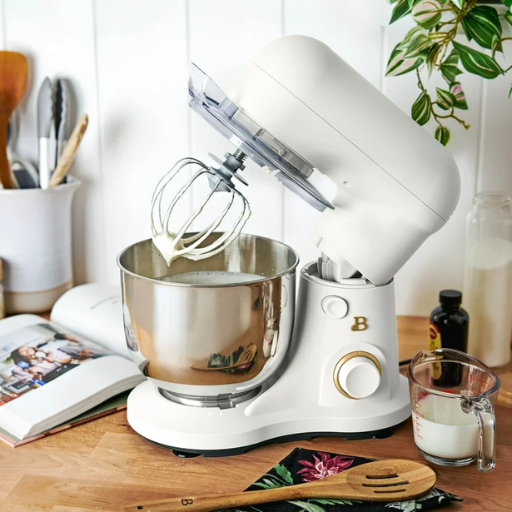
- Clean After Each Use
Do not immerse the motor base or any non-removable components in water. Non-removable components must not be submerged.
- Inspect Regularly
Look over the attachments for any signs of wear along with all of the parts being connected tightly. Notice any cords that are frayed and listen for any strange sounds, which could mean problems with the internal mechanisms.
- Lubricate Moving Parts
Follow the manufacturer’s policy on how often the appliance needs to be greased. If there are no specific details about the grease application, use their general guidance as a reference.
- Store Properly
Store in an area free from excessive cold or heat and humidity. Use a cover to protect against the accumulating dust.
- Follow Manufacturer Maintenance Guidelines
Professional scheduled maintenance should be performed when the appliance malfunctions repetitively. Other than that, follow the care and maintenance policies from the user guide.
Applying proper maintenance and care consistently will keep the stand mixer working optimally for an extended period of time.
Cleaning Tips for Stainless Steel Bowls
Caring for the stainless steel bowls is crucial in retaining their durability, appearance, and food safety features. The tips listed ensure effective cleaning and care for a long period of time:
- Immediate Rinsing After Use
In order to alleviate any potential for food particulates and liquids from drying and binding, rinsing the bowl with warm water immediately is recommended. This step helps reduce staining as well as enable thorough cleaning.
- Use Non-Abrasive Cleaners
Scrub with non-abrasive pads; soapy hot water and a soft dishwashing sponge work well. Do not use steel wool or any scrubbers which may scratch the stainless steel. These destroy the protective layer of the steel, causing corrosion.
- Remove Stains with Baking Soda
If stains or discoloration marks are present then make a paste out of water and baking soda and apply it to the target spot. Once applied, scrub with a soft cloth until it is clean and rinse thoroughly. A baking soda’s mild abrasiveness makes it ideal for other household surfaces too like stainless steel.
- Avoid Chlorine-Based Products
Instead of using bleach or chlorine which can be corrosive to stainless steel leading to pitting or discolored damage, use cleaners specially formulated for stainless steel or natural cleaning agents to vinegar that is water based.
- Dry Immediately to Prevent Water Spots
To maintain the aesthetic looks of stainless steel bowls, they should be promptly dried by a clean soft towel to prevent streaks. Bowls should be washed directly with water. Water left in the bowl may lead to the formation of mineral deposts when exposed to air.
Complying with these washing procedures will preserve the condition of the stainless steel bowls and their lifespan in performing different tasks in the kitchen.
Proper Storage and Handling of Attachments
To maintain the reliable functional performance of kitchen attachments, they must be stored and handled appropriately. The most important step in maintaining the attachments is cleaning them right from the drying process. Failing this leads to food residue that alongside passes of time will corrode or wear components. After thoroughly washing and drying, the attachments should be stored in a clean and dry place. The ideal is a padded compartment where they cannot be scratched or suffer impact.
When managing attachments, not too much strain or inappropriate fitment should be applied, as these may result in damage to the parts in question. Check the manufacturer’s restrictions on the use and fit policies as such will misuse can lead to irreversible damages on the operations of the attachments. Attachments as well should be checked periodically for any signs of aging such as missing parts, fissures, or loose connections. Dealing with such problems can mitigate risks whilst ensure optimal performance of the equipment, which enhances the care of the kitchen tools and equipment.
How to Use a Stand Mixer Effectively?

- Read the Manual
Check the user manual that was given by the manufacturer first. It includes the operational and safety protocols specific to your stand mixer model.
- Select the Right Attachment
Choose the proper tool for the job at hand. Most common – flat beater to mix batter, dough hook to knead, whisk to whip, and otherwise.
- Secure the Bowl and Attachment
Ensure the mixing bowl and all other accessories are tightly locked in position before turning on the mixer. This will ensure the machine operates without shaking or wobbling during the work.
- Start at a Low Speed
Turn the knob to start the machine at the lowest speed to minimize the amount of initial ingredient splashing. Then, increase the speed if needed, depending on the recipe’s guidelines.
- Add Ingredients Gradually
Make sure all components are added slowly to guarantee proper arrangement as well as correct strain limits to the appliance’s motor.
- Monitor the Process
See that the appliance is continuously watched during the working period so that the optimal result can be achieved since the appliance can be stopped at any time.
Mastering Different Mixing Techniques
As with any kitchen appliance, there are techniques and tricks that make proper use of it possible, so with a stand mixer, everything begins with mixing skill. All techniques are important and useful for different goals, including yours.
- Creaming Method
The creaming technique is particular process crucial for soft textured baked goods such as cake and cookies. It begins from the butter and sugar mixture. Place it in the mixer and start at medium speed until it whips. The mixer should yield pale and fluffy results. During this step, some air should inflate into the batter and should be enough for achieving softness on the product’s surface.
- Folding
Folding is a mixing task that incorporates lighter elements—like whipped cream or egg whites—with heavier mixtures while retaining as much volume as possible. To achieve this, put the paddle and start the mixer on the fold setting. Blend the ingredients at a low speed while maintaining the final batter’s volume.
- Kneading Dough
Stand mixers are fantastic in replicating a kneading action for bread or pizza dough. Attach the dough hook and set to low or medium speed. This technique utilizes gluten, the protein net in the mixture that gives structure and elasticity to gel dough, strengthens the rise and textural integrity. Ensure proper observation of the dough to avoid over-kneading.
- Whipping
Ingredients such as heavy cream or egg whites require whipping for volume enhancement. The wire whisk attachment should be set to low speed at the start and gradually increased up to medium or high until stiff peaks have formed. So much air is added through whipping that the end products would need to be light and fluffy—think of meringue or mousses.
These mixing methods, when executed well, are essential for reaching different goals in the kitchen using the stand mixer.
Reference Sources
-
Quality evaluation of hurdle treated chicken sandwich spread applying different processing variables
This study explores the use of braising as a cooking method and its impact on the quality of chicken sandwich spread. It involves mixing processing ingredients and braising for cooking. -
Conservative production of biodiesel from waste vegetable oil
This research focuses on biodiesel production, highlighting the role of vigorous agitation using a mixer during the reaction process. -
Quality evaluation of low-fat chicken sausages fortified with dietary fibre
The paper examines the cooking yield and textural profile of low-fat chicken sausages, incorporating dietary fiber. It also discusses the use of a mixer for grinding ingredients like chia seeds and finger millet.
Frequently Asked Questions (FAQs)
Q: How many speeds should a stand mixer have?
A: A stand mixer with at least 10 speeds is ideal for versatility. This allows you to adjust the speed for different mixing tasks, from whipping cream to kneading heavy dough.
Q: Is a stand mixer easy to use for beginners?
A: Yes, most stand mixers, including the KitchenAid and Cuisinart models, are user-friendly and designed for easy operation, making them suitable for beginners.
Q: Can I put my stand mixer parts in the dishwasher?
A: Many stand mixer parts are dishwasher safe, but it’s important to check the manufacturer’s guidelines. For instance, KitchenAid and Cuisinart typically have dishwasher-safe components.
Q: What features should I look for in a countertop mixer?
A: When looking for a countertop mixer, consider features like durability, a tilting head for easy access, multiple speed settings, and attachments like a spatula or dough hook.
Q: How do I find the right mixer for my cooking needs?
A: To find the right mixer, assess your cooking needs. If you bake frequently, a KitchenAid mixer with a powerful motor and multiple attachments is ideal. For occasional use, a more basic model like Hamilton Beach may suffice.
Q: What color choices are available for stand mixers?
A: Stand mixers like those from KitchenAid often come in a variety of color choices, allowing you to select a mixer that complements your kitchen decor.
Q: Can a stand mixer replace a hand mixer?
A: Yes, a stand mixer can replace a hand mixer for most tasks. It is more powerful and can handle larger quantities, but a hand mixer is more portable and convenient for smaller jobs.
Q: What attachments should I consider for my stand mixer?
A: Consider getting attachments like a dough hook for kneading, a whisk for whipping, and a flat beater for mixing. These attachments enhance the versatility of your stand mixer.

